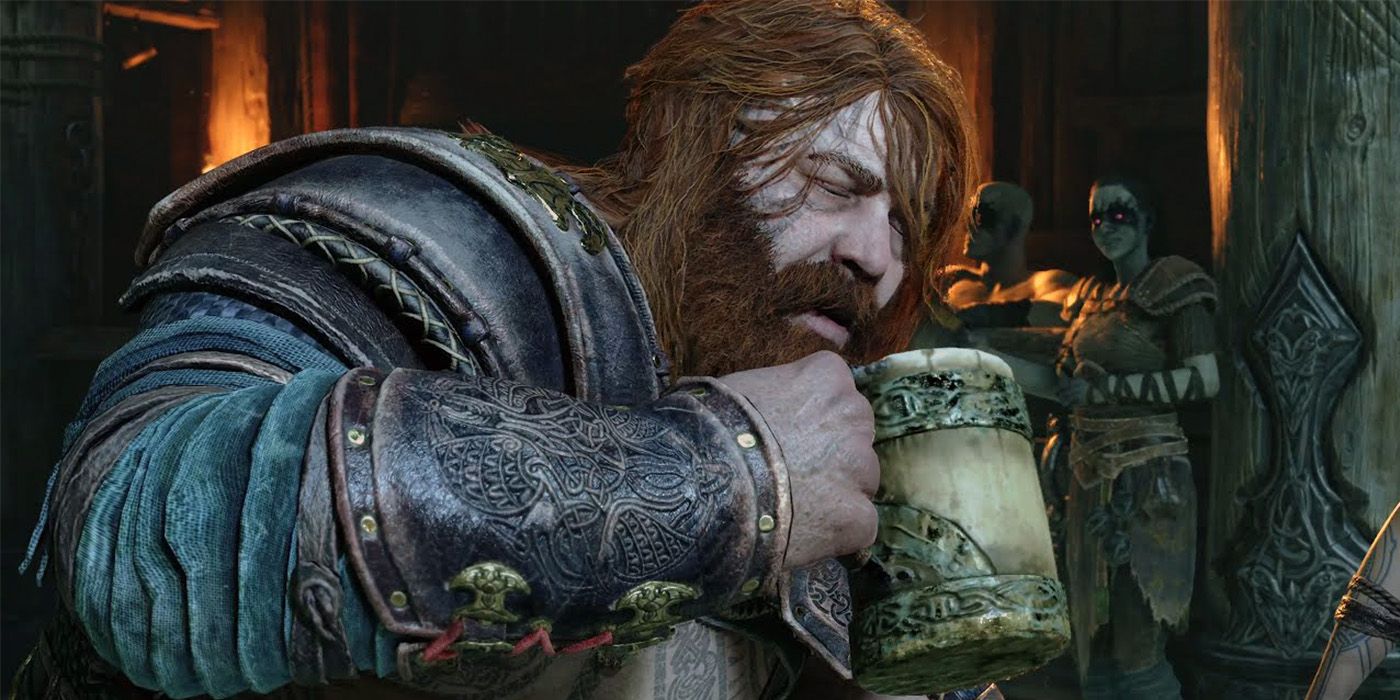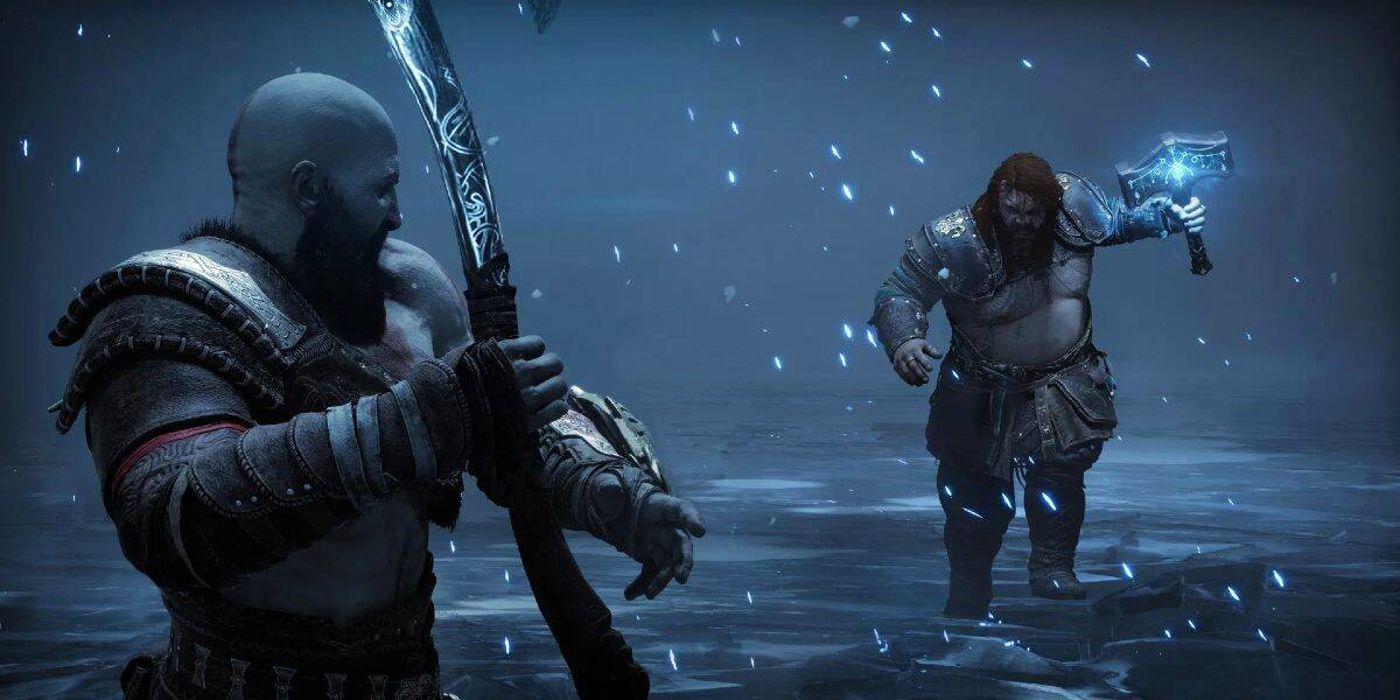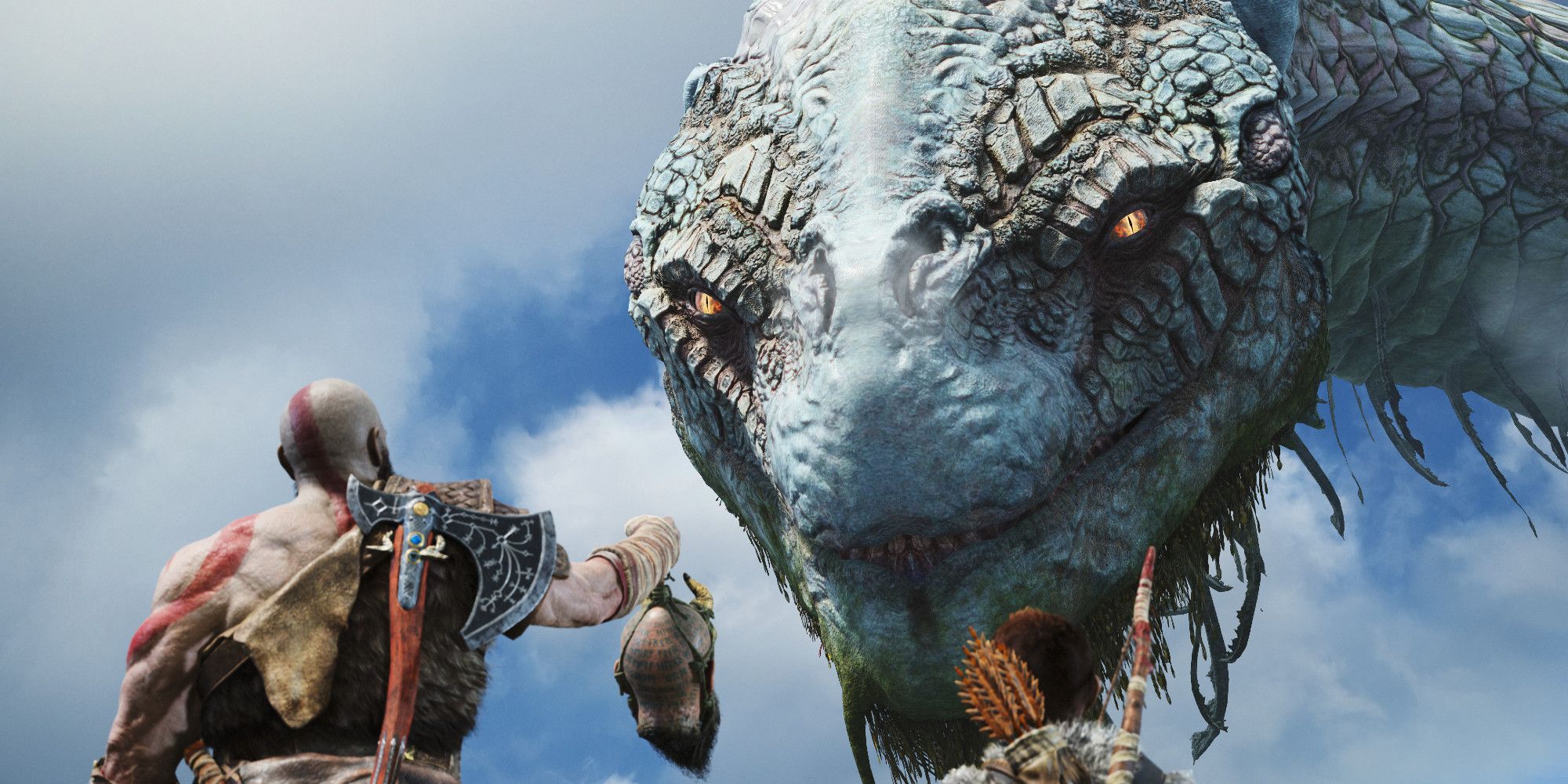God Of War Ragnarök: Why Thor’s Leviathan Axe Wound Never Heals

There is a proper explanation behind Thor’s festering stomach wound that he receives due to fighting Kratos at the beginning of God of War Ragnarok.
The gods in God of War Ragnarok can quickly heal themselves, yet the wound on Thor’s stomach remains, though there could be a reason behind it. There are several instances where players can witness the fast recovery rate of various gods, like in God of War (2018), where Kratos and Baldur can be seen rapidly healing their bodies during their battles. Atreus also shows a similar ability after Kratos unknowingly injures him when he transforms into a bear in God of War Ragnarok.
Thor receives his wound when he faces Kratos in battle, a fight requested by Odin, who does not appreciate the Spartan rejecting his offer. After a lengthy fight that destroys much of the surrounding area, Kratos is able to land a solid hit using the Leviathan Axe on Thor’s stomach. Unsurprisingly, the attack does not stop Thor, and the two gods continue to exchange blows. In the end, Thor doesn’t kill Kratos in GoW Ragnarok and leaves after ominously saying that they will see each other again. The encounter leaves a festering wound on Thor for the rest of the game, and although the story does not provide an obvious answer, there is a proper explanation for this event.
God Of War Ragnarok: Thor’s Wound Festers Because Of Jormungandr’s Venom
The reason behind Thor’s incurable wound is due to the Eitr imbued in the Leviathan Axe. In God of War, Kratos throws the weapon into the Lake of Nine and awakens the World Serpent, who rises out of the water. Jormungandr returns the Axe to Kratos by spitting it out and, in the process, covering it with his venom. Players are even informed that the weapon has been “Eitr imbued,” but the event is never mentioned again for the rest of the game. This detail is not a mysterious plothole in God of War, but a subtle nod to an event in Norse mythology’s Ragnarok.
Thor And Jormungandr Kill Each Other In Norse Mythology
Similar to the characters in God of War Ragnarok, Thor and Jormungandr in Norse mythology are also archenemies whose final battle is written in the Prophecy of Ragnarok. After awakening from his slumber, the World Serpent and his siblings, Hel and Fenrir, reunite with their parent, Loki. They combine their forces with Surtr and other fire giants to face the Gods on the plain of Vigrid. Thor manages to kill Jormungandr but does not leave the battle unscathed because he is covered in the Serpent’s venom, Eitr. The Aesir can only walk nine steps before he succumbs to the poison and dies.
The festering stomach wound is a hidden detail about Thor in God of War Ragnarok that shows the developer’s understanding of Norse mythology. Although Jormungandr does not have the satisfaction of slaying Thor in the game, the Jotun still indirectly harms the Aesir through Kratos. Thor’s stomach wound in God of War Ragnarok is not a plot hole but a reference to Norse mythology, where Jormungandr kills the God of Thunder by using his venom, Eitr.
Source: PlayStation/YouTube
Share this news on your Fb,Twitter and Whatsapp
NY Press News:Latest News Headlines
NY Press News||Health||New York||USA News||Technology||World NewsTimes News Network:Latest News Headlines
Times News Network||Health||New York||USA News||Technology||World News

